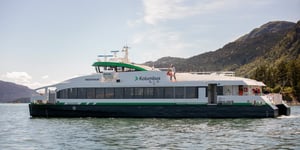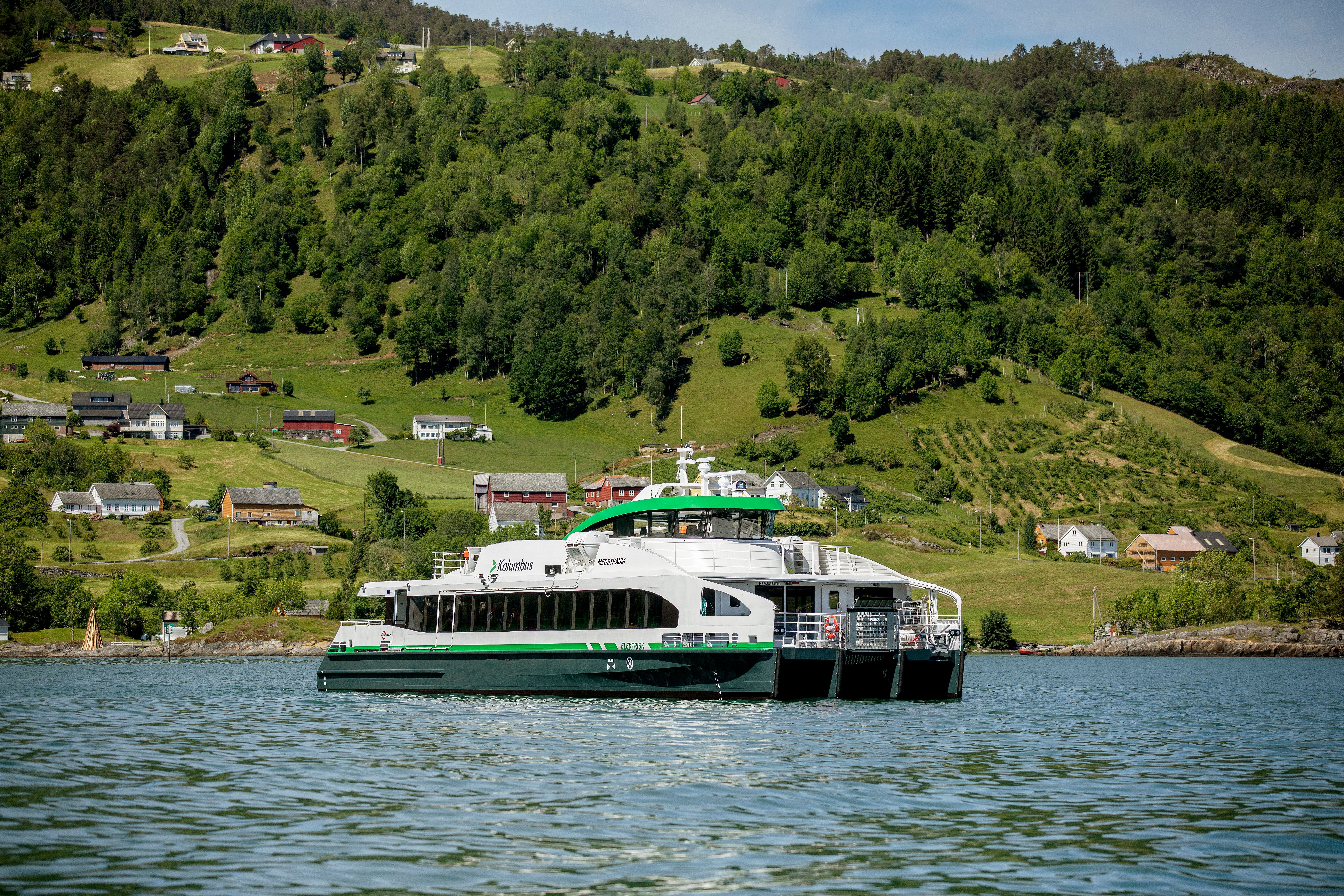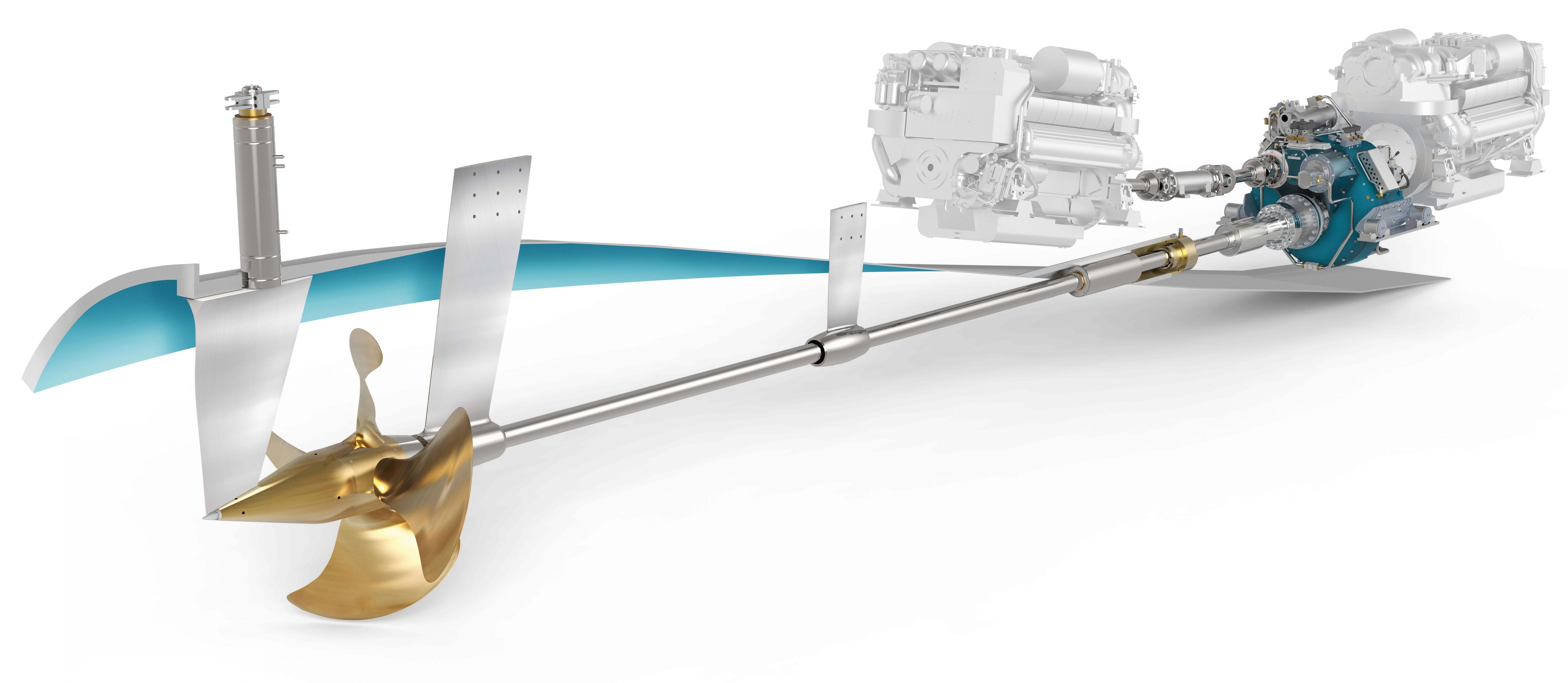Introduction
In today’s maritime industry there is an increased demand for innovative and eco-friendly solutions that not only meet the current environmental requirements, but that also meet the future, more strict regulations.
In response to this demand, MS Medstraum was developed - The world's first fully electric and emission-free high-speed ferry. The ferry is a result of the EU-funded TrAM project, initiated by Maritime CleanTech, led by Kolumbus, and partially funded by Rogaland County Council. This revolutionary vessel won the Ship of the Year 2022 award and is currently operating in the city of Stavanger, Norway, as well as in its surrounding communities and islands.
In this knowledge article we will delve deeper into Medstraum, with a focus on its propulsion system. The aim is to provide insight into how Medstraum is revolutionizing green transportation and paving the way for a more sustainable future.
What is a Typical Fast Ferry?
In this section we will briefly define the operational profile of a typical fast ferry, regardless of energy source. The aim is to provide context into what criteria are important in order to have an efficient vessel.
Fast Ferries are vessels that transport passengers. A typical fast ferry has a high number of operational hours per year; approximately 5000 hours per year/12 hours per day. Furthermore, these vessels tend to have multiple berths every single day. Consequently, the vessel requires good maneuverability to reduce the time during berths and must be efficient during high speeds.
One of the greatest challenges to overcome when designing an optimal propulsion system, is the requirement of efficiency during varying load conditions. A passenger vessel might run fully loaded from A to B but the nearly empty on the way back again. All of these aspects are crucial for the overall energy consumption and emissions.
For fast ferries it is common for 80% of the operational profile to happen at top speed, with (hopefully) all seats filled. This is also when energy consumption is at its peak. Hence, it is crucial for fast ferries to optimize this part of the operations as much as possible.
The Groundbreaking Fast Ferry “Medstraum”
Objective & Aim
The TrAM project was initiated with the objective of creating a zero-emission fast-ferry by using advanced modular production techniques. Through developing new manufacturing methods, the project aimed to reduce production costs by 25% and engineering costs by 70%.
Achievements
The vessel represents an important milestone in the maritime industry, as it is the first time in history that an electric vessel has passed the 23-knot limit (the speed required to be categorized as a high-speed ferry). Furthermore, the project has made electric-powered high-speed vessels competitive both in terms of cost and sustainability.
The fast ferry has a groundbreaking propulsion efficiency of around 80 percent. This means that the energy saving is close to 30% when compared to a standard solution with a water jet or fixed propellor on a similar hull. In addition, emissions have been reduced by 1500 tons per year.
Currently, the fully electric fast ferry MS Medstraum operates on a 12-stop route every single day, with the capability of carrying 147 passengers. The ferry has a typical cruising speed of 23 knots and is powered by batteries only - no fossil fuel backup.
The Path to Success
The vessel’s propulsion system was based on the Servogear Ecoflow Propulsion system, which includes HD 220 E gears, with associated axle, rudder, brackets, and a unique electric-flow propeller. The system has been further optimized specifically for the hull, weight, and hydrodynamics of Medstraum.
Let’s dive deeper into the three key areas that were optimized: the weight, the hull design, and the propulsion line.
Reducing Weight
By reducing the weight of the vessel, the resistance in the water decreases, leading to lower energy consumption, enhanced performance and cost-effectiveness.
MS Medstraum's weight has been significantly reduced through a series of optimization efforts during its development. Various studies were conducted to identify areas where weight could be reduced, focusing on charging systems, cabinets, and onboard components, as well as determining what could be left on land. In addition, using lightweight materials, such as low-weight aluminium, was key in order to reduce the overall weight.
The propulsion system, including an innovative propeller installation from Servogear, has been optimized to deliver unparalleled efficiency. One important change was developing brackets in carbon fiber, instead of the typical stainless steel or brass. This alone, reduced the weight on the vessel with several hundred kilos. Compared to a standard system, the optimized propulsion system on Medstraum is 15% lighter!
The collaborative development efforts and focus on weight reduction have resulted in Medstraum being a technologically advanced, energy-efficient, and lightweight vessel, embodying the vision of a fast and silent ferry experience while maintaining ease of use and recognizability.
Read more: The most valuable energy is the one you do not use
The Hull Design
Minimizing hull resistance in the sea was key to reducing energy consumption. The hull design should ideally have fine lines, and all appendixes, such as brackets and rudders, should be as optimal as possible to reduce resistance in the water.
The hull design on MS Medstraum is completely new. It was developed in collaboration with the Hamburg Ship Model Basin (HSVA) and universities in Scotland and Athens. In total, 2,000 hull shapes were tested using Computational Fluid Dynamics (CFD) analysis, resulting in a fine hull line with reduced resistance in the water.
One important step towards optimizing the hull was to locate the batteries above deck. By doing this, the battery size no longer had to determine the size of the hull. Another benefit with this placement, is that the battery is located in an area that is not susceptible to seawater infiltration in the event of a collision. Placing the battery above the deck also offers other benefits, such as better air cooling and ventilation, making the battery more accessible for replacements, maintenance and daily inspections.
Optimizing the Propulsion Line
Optimizing the propulsion line involves looking at the complete propulsion system, including the engine, shaft, brackets, gear, rudder, and propeller. By ensuring that each component is operating at maximum efficiency, the propulsion system's energy consumption can be reduced.
On MS Medstraum carbon brackets and a streamlined rudder design have been used to reduce drag and improve efficiency. Furthermore, the propeller pitch can be adjusted for optimum load on the engines and to different conditions, such as varying load conditions, weather conditions, and operation modes.
Controllable pitch propeller system allows for smooth maneuvering and reduces wear and tear on the engines and gear boxes– meaning lower engine maintenance costs.
Conclusion
Through using an innovative approach and pushing boundaries, the high-speed ferry MS Medstraum has set a new standard for electric vessels. By utilizing the latest advancements in propulsion systems, such as the CPP, and designing a hull that is optimized for efficiency and sustainability, the TrAM project team have achieved exceptional performance and reduced environmental impact.
As a result, the MS Medstraum serves as a model for the future of the maritime industry. Its development represents a significant step forward towards a more sustainable future!
Medstraum: Other Facts
Length: 30,4 meters
Beam: 9,0 meters
Built year: 2022
Gross tonnage: 225
Passengers: 147
Route Speed: 23 knots
Max Speed: 27 knots
Battery Capacity: 1524 kWh
Charge Capacity: 2,3 MW
Electric Engines: 2x Permanent Magnet Motors (550 kW)
Fresh Water Tank: 400 liters
Sewage tank: 1000 liters
Luggage: 20 Bicycles
Facilities: 3 toilets
Rescue Systems: 2x 150m Survitec open reversible rafts.
2x Servogear Gearbox
2x Servogear Controllable Pitch Propellors
2x Corvus Dolphin Power Lithium Battery Systems for propulsion and hotel load
Project Partners:
Kolumbus
Rogaland Fylkeskommune
Fjellstrand
Leirvik
Maritime Cleantechk
HSVA
Servogear
Wärtsilä
Hydro
University of Strathclyde
Fraunhofer
The National Technical University of Athens
Uber Boat
De Vlaamse Waterweg




